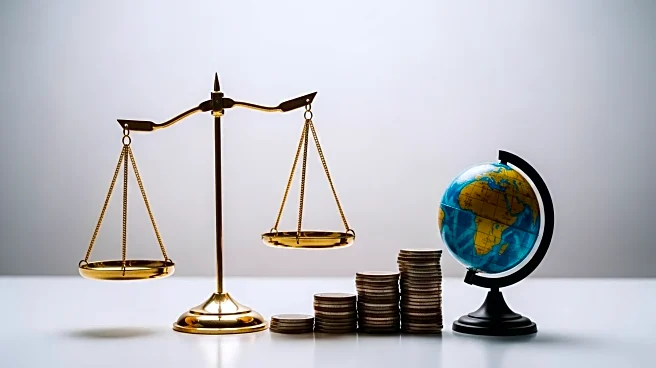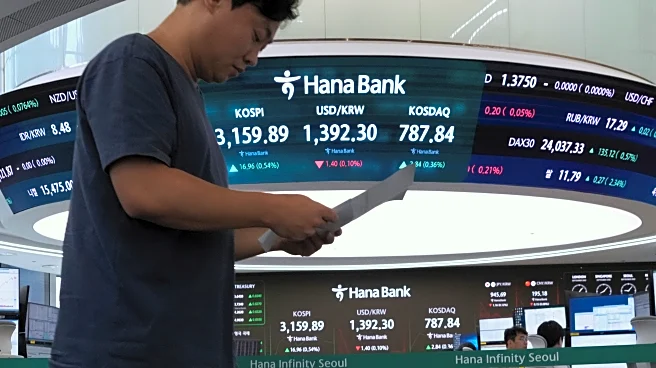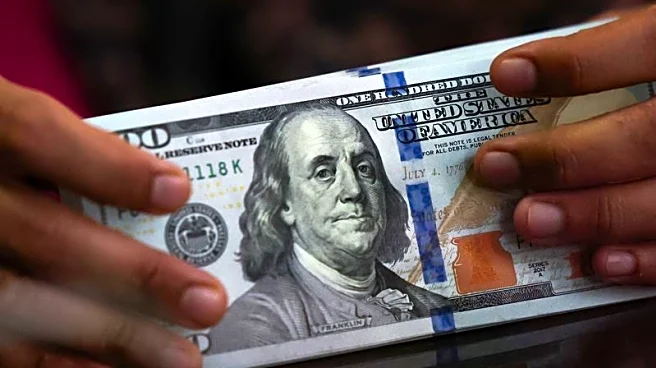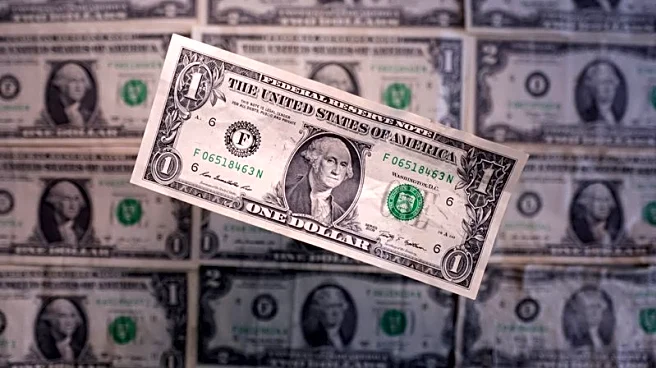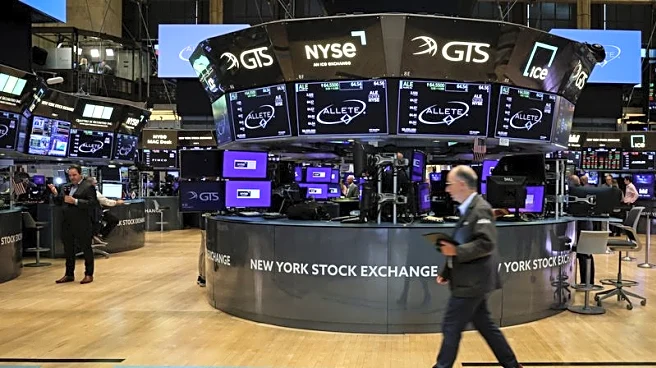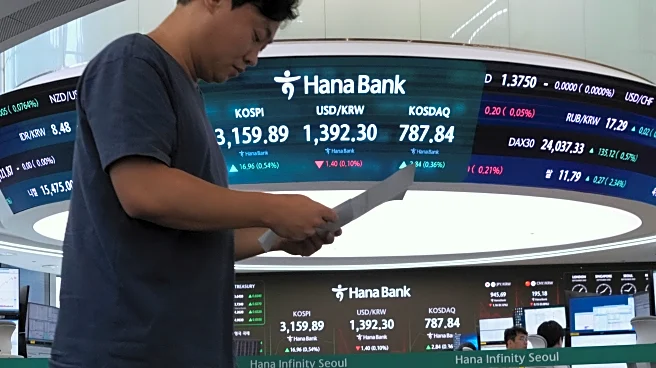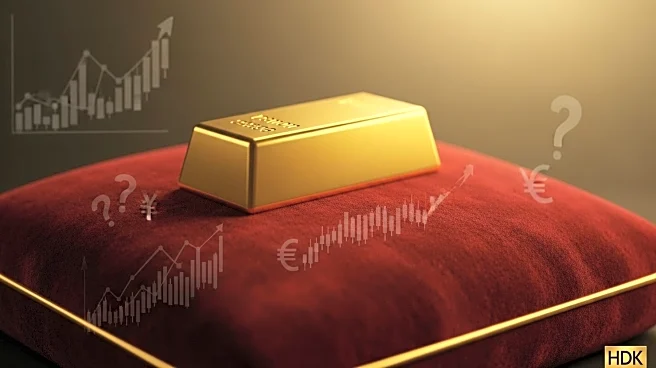What's Happening?
Gold prices surged to an unprecedented high of over $3,500 per ounce on Tuesday, driven by expectations of a U.S. Federal Reserve interest rate cut and a weakening dollar. The precious metal has seen a 32% increase this year, bolstered by safe-haven demand and central bank purchases. Analysts suggest that the potential rate cut, anticipated to be announced on September 17, could further enhance gold's appeal as a non-yielding asset in a low-interest-rate environment. The SPDR Gold Trust, a major gold-backed exchange-traded fund, reported a rise in holdings, indicating strong investor interest.
Why It's Important?
The surge in gold prices reflects broader economic uncertainties and geopolitical tensions, prompting investors to seek stable assets. A potential rate cut by the Federal Reserve could lower borrowing costs, impacting various sectors including real estate and stock markets. Gold's rise also signals a shift away from the U.S. dollar, which could affect international trade dynamics. The increase in gold prices may benefit investors and central banks holding significant gold reserves, while posing challenges for industries reliant on dollar stability.
What's Next?
Investors are closely monitoring upcoming U.S. nonfarm payrolls data, which could influence the Federal Reserve's decision on interest rates. A rate cut might further boost gold prices, while any deviation from expected economic indicators could lead to market volatility. Stakeholders, including policymakers and financial institutions, are likely to react to these developments, potentially adjusting strategies to mitigate risks associated with currency fluctuations and asset valuations.



